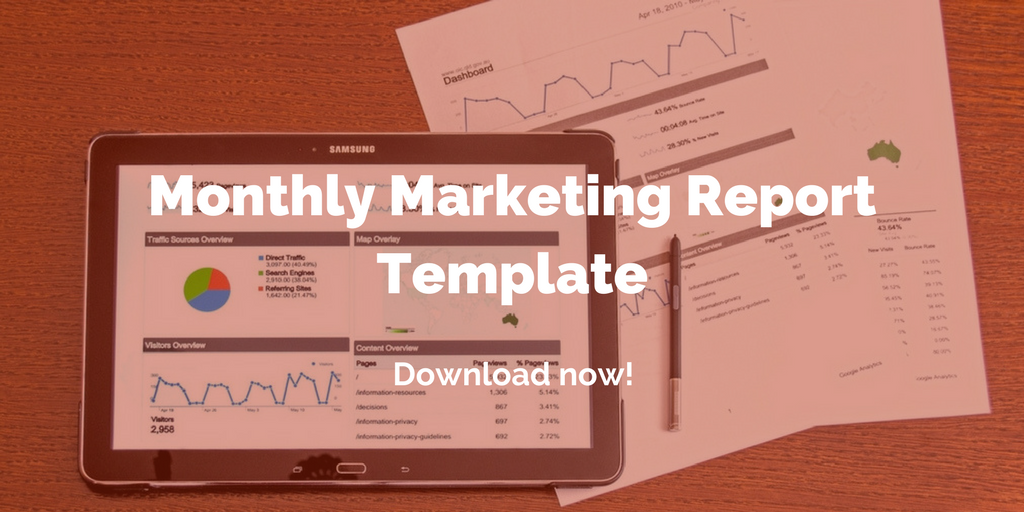
by Fronetics | Sep 13, 2017 | Blog, Content Marketing, Marketing, Strategy
Marketing can help sales close deals by providing targeted content that demonstrates the business value of the product or solution.
Sales and marketing often exist in separate corners. The marketing team works to create lead opportunities through content, and the sales team tags in to turn those leads into deals.
But a new survey report shows how this missed connection is having a real effect on businesses’ bottom lines. In fact, 49% of respondents cited a lack of communication as their biggest misalignment between sales and marketing.
But simply sharing marketing content with your sales team isn’t enough. Another new study shows that one of the 3 biggest mistakes salespeople make is not clearly explaining how their solution helps the buyer’s business.
“Buyers amass information that helps them justify their strategic decisions,” says author and University of Southern California Marshall School of Business instructor Steve W. Martin. “In other words, a product’s strategic value comprises the reasons and arguments that buyers provide to senior management and others in the company about why they should purchase a product.”
Let them have content
Strong communication between sales and marketing can help achieve big-picture goals, including:
- mutual understanding of the buyer’s journey
- updated prospect insights that can affect future marketing content
- brainstorming solutions to bottlenecks in the sales funnel
When your company begins to view sales and marketing as a joint unit, you’ll see a wave of data and resources flowing in both directions. While sales can provide deeper insights into audience relationships, marketing can use that data to provide sales with a wealth of targeted content.
Leverage sales reps as industry leaders
Studies continue to show that sales reps are most successful when they are viewed as experts in their field. A 2016 sales optimization report found that 92% percent of buyers engage if the rep is a known industry thought leader.
As thought leaders, members of your sales team should actively engage in discussions on social channels like Facebook, Instagram and Twitter with guidance from your marketing team. Rather than trying to sell, they can use those social spaces to share expert information and to be genuinely helpful.
Arm a sales rep with targeted content to share with prospects during specific moments in the purchase process, and it will advance his or her reputation as a source of knowledge. That can be the key to getting a foot in the door, advancing through the final stages of a purchasers’ decision, or closing the deal.
Related posts:

by Fronetics | Sep 12, 2017 | Blog, Current Events, Marketing
Fronetics announces the official launch of sister brand, Fronetics Real Estate, serving residential and commercial real estate clients.
It’s a big day for Fronetics! We’re officially launching our new brand, Fronetics Real Estate (FRE), offering digital and content marketing services to residential and commercial real estate clients.
Over the last two decades, real estate has seen a major shift in buyer behavior, with buyers now conducting the majority of their research online. Content marketing is an approach that puts real estate marketers in charge of the way prospective buyers and tenants perceive and interact with their properties. The strategic creation and distribution of content helps properties:
- Build brand awareness
- Generate prospects
- Lower cost per lead
- Increase occupancy
- Drive sales
- Improve retention
As content marketing experts, Fronetics Real Estate is uniquely positioned in the real estate industry. Firstly, we have a proven history of success with content marketing for real estate. Our clients benefit from having a dedicated account team that works exclusively with real estate clients — they know how to help them succeed.
Secondly, our approach is unique in that it starts with data and ends with measurable results. We design and execute a strategy that aligns with your business objectives. That way, our clients see movement where it matters: lower cost per lead, higher occupancy, and faster sales.
Real estate marketing services
Fronetics Real Estate’s portfolio of digital and content marketing services includes:
- Content marketing: strategy development, content creation, and execution
- Social media: strategy, management, distribution, advertising
- Email marketing: templates, marketing emails, workflows, and newsletters
- Website development: branding, design, maintenance, and content creation
- Paid advertising: pay-per-click and social media advertising
- Sales enablement: reporting and analysis, sales content optimization, automation
Whether you have luxury condominiums, for-rent apartments, a planned community, commercial properties, or mixed-use/retail space, we would love to show you about how Fronetics Real Estate can help you reach today’s prospective buyers and tenants.
Read the official press release or visit our newly launched Fronetics Real Estate website to learn more about FRE.

by Fronetics | Sep 11, 2017 | Blog, Content Marketing, Marketing, Social Media, Strategy
Social prospecting can help logistics and supply chain companies identify and engage with leads on social media in a genuine — and highly effective — way.
Social media should be an integral part of your marketing strategy. You know it helps build brand awareness, gather market intelligence, discover customer problems, and influence purchasing decisions. But your lead generation efforts should also include the use of social platforms. It’s a practice called social prospecting, which can be highly effective in identifying new prospects.
What is social prospecting?
With more than 2 billion monthly active users on Facebook and over 328 million monthly active users on Twitter, smart marketers know there’s more potential than ever to use social platforms to get their name out there, spread their content, and draw more people to their site. Hey, it’s your job to make people aware of what your company can offer, right? Right.
That’s where social prospecting comes in. It involves scouring the social web, identifying potential prospects for your business, engaging them with content, and getting those potential prospects to your sales team. “Social prospecting is the art of listening to people, not mentions or keywords,” writes Maggie Hibma for HubSpot.
Social media isn’t just for recreational purposes anymore. More than half (53%) of B2B buyers report using social media to research purchases, in fact. Social prospecting allows you to be proactive in finding all of the considerable number of social-media-using prospects who are looking for you, too.
But as with any initiative, social prospecting requires commitment. In order to find new leads, social prospecting needs to become a part of your daily routine. The end results will be quality leads that are already committed to your brand because of the connection you have created through social channels.
Creating positive impressions
The secret behind successful social prospecting is creating and distributing content that shows that you and your company genuinely care about your clients and prospects. It’s about ditching the ‘sales’ game and working to establish your brand as an industry leader that has a connection to your community and a lot of valuable insight to share.
Make your content about your target consumers: What do they need to know, struggle with, or want to learn more about? By distributing this content across social channels to foster sharing, conversation and engagement, you’ll gain influence with your audience (and their networks) and make a positive impression.
Prospecting vs. spamming
The definition of spam is “indiscriminately.” It means “in a random manner” or “in a way that does not show care or judgment.” This is the opposite of how social prospecting should work. The connection that you create with your prospects should be anything but random.
Think about the number of possible prospects on social media right now. Facebook just topped 2 billion active users monthly, and Instagram is pulling in over 250 million daily active users. These massive numbers scream opportunity — but only if you are putting your time and effort into the right people, on the right channels, at the right time.
Sounds complicated? It doesn’t have to be. If you already have a social media presence, that’s step one.
Fronetics’ recently updated Social Prospecting Workbook guides you through using social listening to generate new leads for your business. We’ve identified the quickest way to find potential customers on Twitter, Facebook, LinkedIn, Pinterest, and Google+. Every worksheet includes:
- Short preparatory work to make the actual prospecting easy
- Visual instructions on how and where to find prospects
- Pro tips that will help you get the best results
- Prescriptions (Marketing Rx) for success
- Take-home exercises for follow-up prospecting
Download it now, and let us know what you think!

Related posts:

by Fronetics | Sep 7, 2017 | Blog, Content Marketing, Marketing, Social Media
When you are posting on social media could be as important as what you’re posting, and this CoSchedule study attempts to determine the best time to post.
Timing is everything. And that statement especially holds true when it comes to posting content to social media.
There’s no point in putting in the time and effort to create informative blog posts, inspirational tweets, or captivating Facebook posts if you’re not getting the most exposure you can out of your social media outlets.
That being said, there is ample data out there on the best times to post on Facebook, Twitter, LinkedIn, and Instagram. Earlier this year, CoSchedule looked at a combination of its own original data and more than a dozen studies on this very topic, from sources like Buffer and Quintly, and compiled the results to take the guess work out of when to post.
Here’s a breakdown of their results.
Best times to post on social media by network
Facebook
Most people are using Facebook around the clock, on their desktop and mobile devices. Unlike other sites that attract more attention during the work week, Facebook users are checking in at work and at home.
- The most optimal time to post is 1-4 p.m. Thursday through Sunday, specifically on Saturdays and Sundays between 12-1 p.m.
- Posts during the week had the highest clickthrough rate on Wednesdays at 3 p.m.
- Avoid weekends before 8 a.m. and after 8 p.m., when user numbers are significantly lower
Twitter
Much like Facebook, Twitter users are active on their mobile devices as well as their desktop computers. But they tend to treat Twitter like a revolving newsfeed, so downtime breaks — like during commuting hours and lunch — tend to see higher usage.
- Between 12-3 p.m. and 5-6 p.m. is the optimal time to tweet for the most exposure, which correlates with lunch and the evening commute.
- Weekday tweets have a higher chance of being retweeted with higher clickthrough numbers
- B2B tweets saw a 16% better performance during work hours, while B2C tweets saw a 17% better performance on weekends.
LinkedIn
Also known as the social media site for professionals, LinkedIn saw 25% of its users during weekdays and specifically, during work hours. Not as popular as some of its competitors, more than half of LinkedIn users visit less than once a week, so your posts need to deliver a clear message in short, informative posts.
- Not surprisingly, the posts with the highest views and clickthrough rates were Tuesdays through Thursdays from 7-8 a.m., 12 p.m. and 5-6 p.m., in direct correlation with the start and end of the work day.
- Some companies have seen a higher performance on Tuesdays between 10-11 a.m.
Instagram
More than half of Instagram users log on daily, but tend to use the mobile app in their free time. Posts for this site are image-driven and are often more creative and less data-heavy than other sites.
- In general, the best times to post are on Mondays and Thursdays, in the evenings or early mornings.
- Some companies have reported success on Mondays between 8-9 a.m., correlating with the morning commute.
Many people still play a guessing game when it comes to deciding the best time to post their content for the most impact. And though there is no magic formula for the most retweets or reposts, there is data to help guide you. Posting the right content, at the right time, can make the difference between getting valuable comments, shares, and clicks on your links, which translate to valuable new leads.
Related posts:


by Fronetics | Sep 6, 2017 | Blog, Content Marketing, Marketing, Strategy
Find the right marketing outsource partner for your business by asking specifically about strategy development, industry experience, and more.
More and more supply chain companies are choosing to outsource their marketing, giving them the flexibility to focus on their core business, while leaving marketing to trusted experts. But before you jump into a partnership, it’s important to remember that not all marketing firms are created equal.
To help you decide if a marketing firm is right for your business, here are 10 questions you should be asking potential marketing partners — and what to listen for in the answers.
10 questions to ask marketing outsource partners
1) How do you develop a strategy?
The word you should be listening for is: individualized. Your marketing partner should build a strategy specifically tailored to your business, based on data, analytics, and your company’s goals.
2) What would my account team look like?
When you outsource your marketing, look for a team of experts that work together to improve the various aspects of your marketing strategy. For example, the person running your social media presence should have specific social media expertise.
3) Do you know my industry?
It’s vitally important that your marketing partner has a deep understanding of your company, your industry, and your customers. Don’t be satisfied with a surface knowledge, or with a marketing firm that doesn’t have personnel that specializes in your industry.
4) How do you measure success?
Your marketing partner needs to have a plan in place to provide you regular and frequent reports showing designated metrics that match the goals of your strategy. For instance, if one of your business’ goals is to increase brand awareness, web traffic and social impressions are two metrics you should be getting reports on every month.
5) What other services do you offer (even if I don’t need them yet)?
Many of Fronetics’ clients start off wanting only one of our services (like social media management), but quickly realize a multi-channel digital strategy would better help them reach their goals. You want to know that, if you need to expand your scope of work to include more services (such as social advertising or video creation), your partner can handle those.
6) Do you offer training?
We’ve all heard the old adage about teaching a man to fish. While it can be hugely beneficial for your business to trust your marketing strategy to the experts, part of a well-rounded strategy includes educating key members of your staff, such as sales personnel, on how the rest of your business’ operations can dovetail with your marketing strategy. A partner who offers workshops or other types of training is a plus.
7) What is your philosophy for content creation?
Listen for a partner who listens to you. If you’re going to outsource content creation, your partner needs to be ready to learn every aspect of your business, its goals, and its philosophies — and to create content that reflects those things.
8) Do you have videography capability?
Even if you don’t think your business needs video content right now, chances are, this new wave content platform will be something you need at some point. You want to find a partner who can easily help you make strides in this area — whether the partner handles video production in house or will manage a third-party vendor for you.
9) What are your goals for my business?
You want a partner who shares your company’s vision. But it’s a bonus if you can find a partner who offers you goals you hadn’t even considered but that make sense for your business.
10) What’s the first thing you’re going to do when I hand over my business’ marketing strategy to your firm?
While it might be exciting to hear an answer like “revamp your entire web presence,” the savvier business listens for something a little different. A partner who assures that they will first seek to analyze, research, and understand every aspect of your unique business will ultimately be more likely to guide you to your goals. Once they know the ins and outs, then it’s time for the revamping!
Related posts:


by Fronetics | Sep 5, 2017 | Blog, Content Marketing, Marketing, Social Media
Use Quora to answer potential customers’ questions, and they’ll perceive you as a valuable source of knowledge and an industry thought leader.
Despite gaining popularity over the last several years, Quora’s potential as a marketing tool for supply chain and logistics companies remains largely untapped.
In case you haven’t jumped on the bandwagon yet, Quora touts itself as “a place to share knowledge and better understand the world.” It’s a simple premise, but one that’s been highly effective since its founding in 2009: “It’s a platform to ask questions and connect with people who contribute unique insights and quality answers.” Essentially, the site is a community-generated question-and-answer forum.
How does Quora work?
Anyone can ask or answer questions on Quora. A key feature of the site is voting feature: community members vote on which answers are most helpful, boosting those responders’ visibility and credibility. A few other things the site allows you to do:
- Target your question to specific users;
- Publish content (much like LinkedIn’s publishing platform);
- Search for questions or topics relevant to your business, and follow these keywords to get notifications of new questions.
You might already be starting to see the exciting potential in this social media platform. But let’s talk about three specific ways you can use Quora to build your brand, generate leads, and engage with your potential buyers.
3 ways supply chain and logistics marketers can use Quora
1) Research
Using Quora is about gaining and spreading knowledge. Your peers and competitors might be talking about their new projects with an audience that’s actively offering feedback on what it wants or doesn’t want. Before even jumping in with your own content, just staying attuned to the conversation can be a valuable resource as your business builds its marketing strategy.
2) Building and maintaining connections
Relationship-building is a key benefit of using Quora. While sites like LinkedIn and Twitter are valuable for quicker engagement, Quora offers a forum for substantive conversations, a crucial building block for lasting buyer engagement.
The site also offers a great opportunity to reach beyond your normal sphere. Emma MacAnnally of Torchlight suggests: “Don’t be afraid to ask questions and engage in conversations with others you respect and admire.” She points out that doing this will broaden your audience, offer new insights, and give you recognition with thought leaders in your field. “Networking can happen anywhere,” she says.
3) Reputation building
Quora offers you the ability to run a quick search of your business’ name, and tune in to what’s being said about your brand. Also, by answering others’ questions with substantive, reliable content, you can become a resource for potential buyers, as well as others in the industry.
Your business is more than its product. You can offer your audience valuable knowledge. Quora gives you a direct way to answer the questions that your potential buyers are asking, building your reputation as a resource for knowledge and as an industry thought leader.
Related posts:











